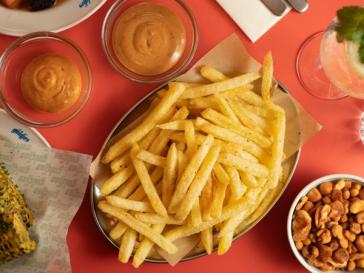
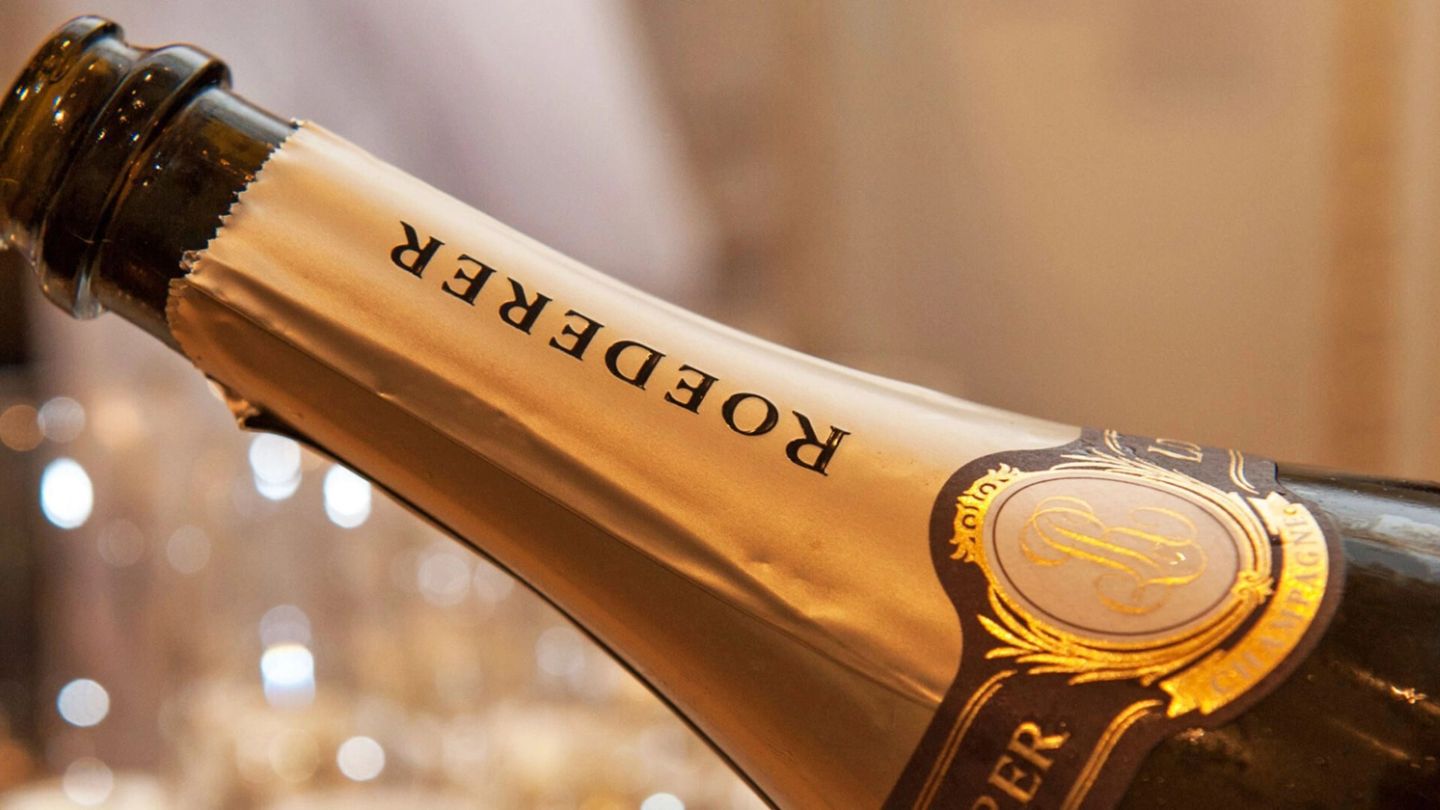
How did a family-owned label become ‘the world’s most admired champagne brand’?
From putting down roots in 1776 to the planting of a ‘research vineyard’, here’s how Louis Roederer built a sparkling brand from the ground up…
The acclaim of Champagne is nothing new. Since the first fizz was enjoyed — splashed into flutes and coupes across the continent — this inimitable sparkling wine has been served at the most prestigious celebrations; saved for the most special of occasions. And the most revered, respected label of them all? Louis Roederer.
That’s not our opinion, either — it’s a fact. It’s the unequivocal, quantified result of a study by global industry publication Drinks International. Because, every year, the magazine gathers more than 300 experts — from sommeliers to specialist wine writers — and tasks them with creating a corking list of the most esteemed champagne producers from Chaumont to Charleville-Mezieres.
This year, for the third time in four years, Louis Roederer has once more bubbled to the top of the rarefied field; its acres of vineyards, biodynamic practices and strong branding impressing the judges — who are asked to consider the quality of the label’s range, the price point and the level to which they personally respect the house.
So how has Louis Roederer done it? Over the course of its champagne-soaked centuries, the pioneering label has always spearheaded innovation, and steered the wider wine industry into the future. So, below, we’ve explored this success and artistry using seven major milestones, and ask; how did a family-owned label become ‘the world’s most admired champagne brand’?
In 1776, the house put down well-regarded roots
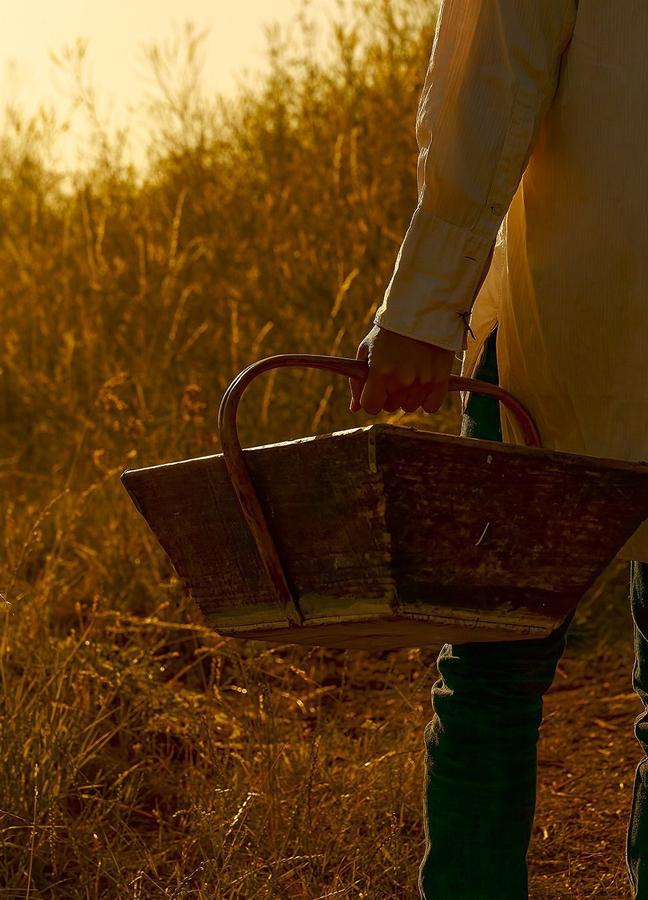
Before Louis Roederer became Louis Roederer, the company was known by another name: Dubois Père & Fils. The brand first sprang up in 1776, when it laid the foundations for the centuries of success to come. Today, the majority of Louis Roederer’s vineyards remain in the Montagne de Reims, the Vallée de la Marne and the Côte des Blancs regions; chalky, mid-slope estates with little topsoil. But this modern-day talent for identifying the ideal terroir is nothing new — and can, in fact, be tracked back to these first prime plots.
When Dubois Père & Fils established itself as a leading light in the renowned winemaking region, there were fewer than 10 champagne houses operating in Reims and Épernay. As such, the quality of the brand’s appellations and the care afforded to its blending soon established Dubois Père & Fils as a trendsetter and trailblazer of the time. Provenance remains a key part of the brand’s success; today, Louis Roederer owns almost 75% of all the vineyards it uses to produce champagne (the highest of any major house).
In 1833, the brand as we know it was born
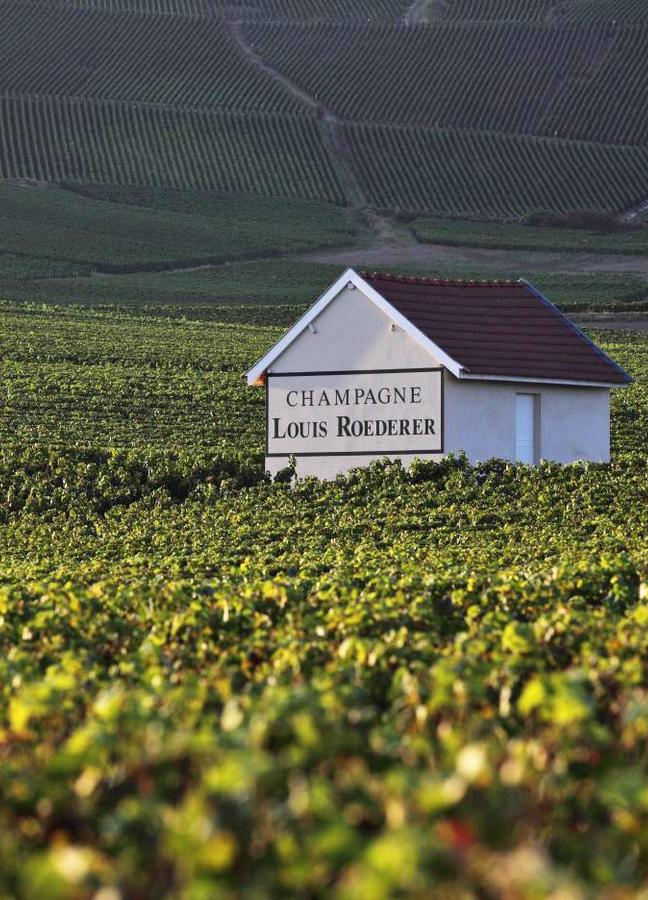
Over half a century after Dubois Père & Fils put down roots in Champagne, its owner passed away — and the house was inherited by his nephew; one Louis Roederer. Almost immediately, the young Roederer recognised the need to build a recognisable brand, and changed the name of the company to ‘Champagne Louis Roederer’.
It was a bold, bombastic move — but one that set the pioneering pace for every future-facing development to come. And Roederer didn’t just switch up the brand’s name; he was also visionary in his approach to the winemaking process. Rather than buying in his grapes (which was the standard practice at the time) Roederer established his own vineyards to ensure he had complete understanding and control over the planting, growing and harvesting of his fruit.
By 1845, the house had acquired over 15 hectares in the grand cru vineyards of Verzenay — and Roederer knew every square inch of it; putting in place a deep connection with the soil that the family-owned house still prides itself on today.
In 1876, the label’s flagship champagne was launched
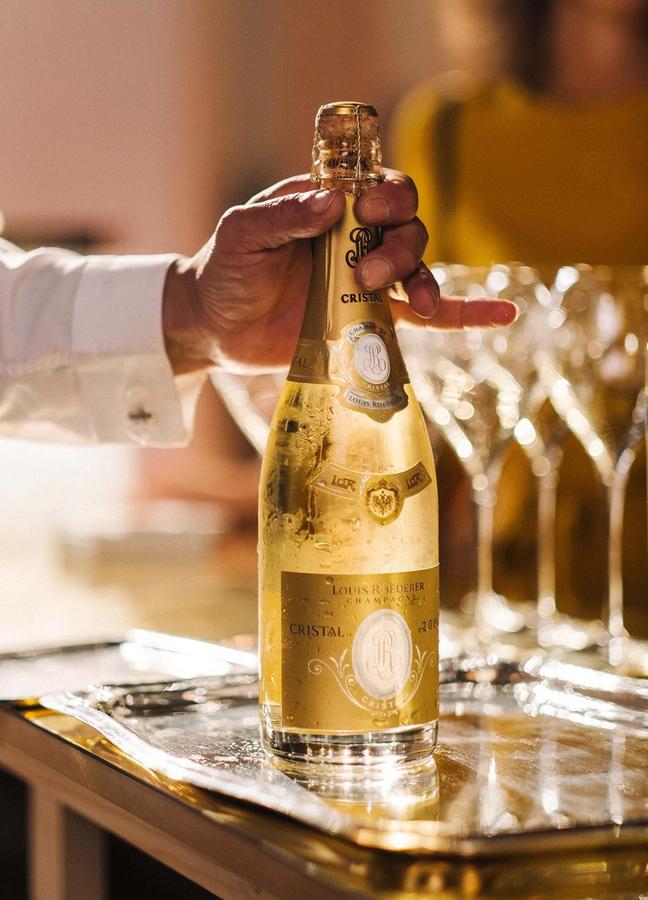
The world’s most admired brands — from car manufacturers to clothesmakers — tend to have a signature, hero product. It’s part of what makes these globally-renowned companies so distinctive and recognisable. Midway through the 19th Century, Louis Roederer’s range launched a hero of its own, crowning the collection with the glorious ‘Cristal’.
It was created exactly 100 years after the brand’s founding, when the house received a request from Tzar Alexander II of Russia: create a champagne especially for the emperor’s enjoyment, presented in a clear bottle. This sweet sparkling wine became the first ‘Prestige Cuvée’, and gave Louis Roederer that all-important signature product. Today, scores of sommeliers and wine aficionados around the world still eagerly await the annual release of the flagship cuvée, which has a silky texture, fruity aromas and citrus notes.
In the early 2000s, a ‘research vineyard’ was established
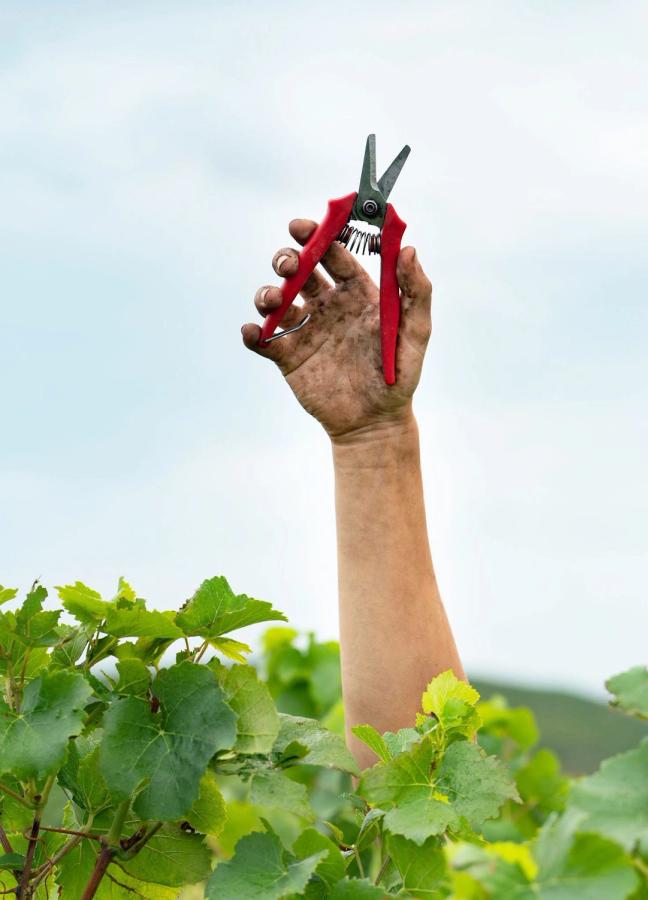
Never a brand to rest on its laurels (or its meticulously-maintained vines), Louis Roederer celebrated a new century by looking even further forward. Then-owner Jean-Claude Rouzaud, and winemaker Jean-Baptiste Lécaillon, established a ‘research vineyard’ — ten expansive, exploratory hectares of grapes grown to test out tips and techniques for the years ahead.
In 2013, the brand even bought up a site in Bouleuse, near Reims — on which it planted new rootstocks. This gave Louis Roederer the opportunity to grow young vines that were wholly grown on their own sites — plants genetically suited to Champagne’s soils — without using the German or Spanish vineyard nurseries relied on by many other houses.
It’s this sort of enlightened thinking that has given Louis Roederer a reputation for admiration. The label’s new sites looked at rootstocks, clones, genetic materials, pruning methods and more to help better understand the vines — aiming to adapt to a changing climate and discover how best to keep the vines healthy and capable of producing some of the finest sparkling wines in the world.
In 2006, the brand spearheaded sustainability
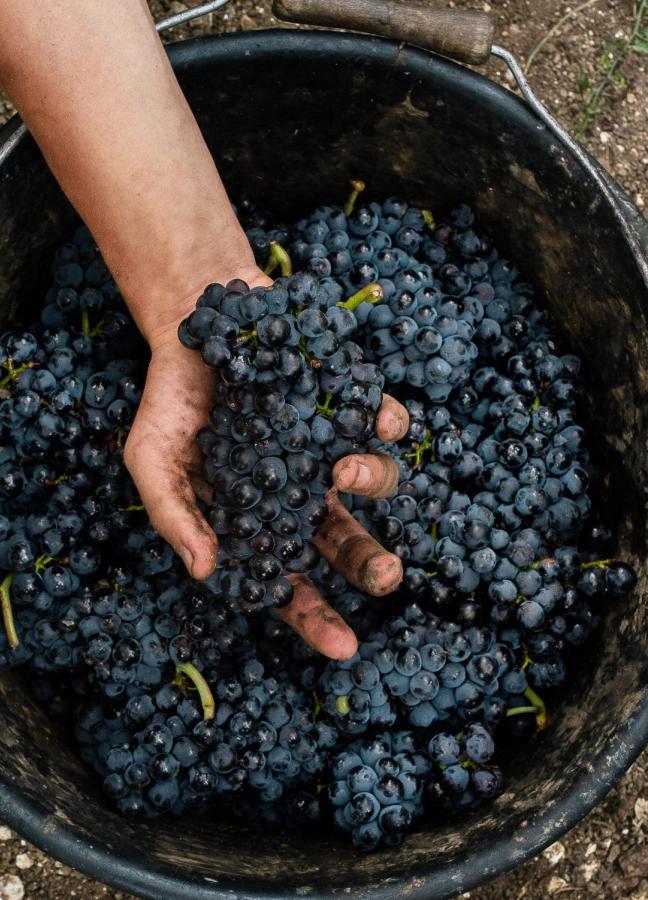
Louis Roederer always had strong eco-credentials. The brand’s move towards more organic and sustainable practices was first implemented in 2000 by Jean-Claude Rouzaud, and has been given even more impetus since his son Frédéric took over in 2006. And the first step was a switch to biodynamic farming in the large family-owned vineyard estate — with more clean, green initiatives soon to follow.
In 2011 and 2012, Rouzaud and head winemaker Jean-Baptiste Lécaillon experimented with new forms of farming after purchasing large swathes of the Leclerc Briant family biodynamic vineyard. By 2015, Louis Roederer had over 60 hectares being farmed organically or biodynamically.
And today, 115 hectares are certified organic and follow biodynamic practices, with the remaining 110 hectares farmed organically. The house also refuses to use any fertiliser aside from biodynamic compost, and stopped using herbicides over twenty years ago (a whole two decades before the whole region will ban their use in 2025).
In 2020, a range of still wines was launched

As recently as just two years ago, Louis Roederer was still forging into the future. Recognising that the changing climate allowed for the production of high quality still wines, the label launched its own ‘Coteaux Champenois’; a selection of still wines named ‘Hommage à Camille’ in recognition of the great grandmother of 7th generation owner, Frédéric Rouzaud.
It was a bold move for a champagne house, but one that paid off handsomely. Camille Charmont 2018 Red and Camille Volibarts 2018 White bolstered the already respected reputation of the family-owned label, allowing fine wine drinkers to discover yet another facet of the brand’s unique winemaking expertise. And, with a very precise and pure bouquet — and warm notes of wheat, dried nuts and pear — it was a richly deserved pay-off from Rouzaud’s long process of observation and experimentation.
In 2021, the latest multi-vintage bore the brand’s history on its bottle

Which brings us to the (almost) present. Last year, Louis Roederer began to mark the brand’s milestones more clearly than ever before by employing more reductive methods to maintain freshness and underscore the natural salinity of its celebrated multi-vintage, ‘Brut Premier NV’ — also changing its name to ‘Collection 242’. And that’s not an arbitrary number. Rather, it will change every year — signifying the number of harvests in the brand’s history thus far, and placing the label’s storied, sparkling past at the heart of every drinking experience.
It’s a clever move; one that both underlines the label’s extraordinary experience within the industry and serves as a statement on its continuing study of viticulture and winemaking. Since 2018, all of the vineyards used to produce Louis Roederer’s Cristal Rose, Cristal, Brut Nature, Brut Nature rose and Blanc de Blancs are all made from 100% biodynamically farmed grapes.
So it’s no small wonder that the brand has maintained a reputation as ‘the world’s most admired champagne brand’. With such a strong focus on sustainability and exciting outlook on the future of winemaking, Louis Roederer is a label with shining past — and a sparkling future.
Want to learn more? We uncork Champagne Louis Roederer Collection 242…
Become a Gentleman’s Journal member. Find out more here.



